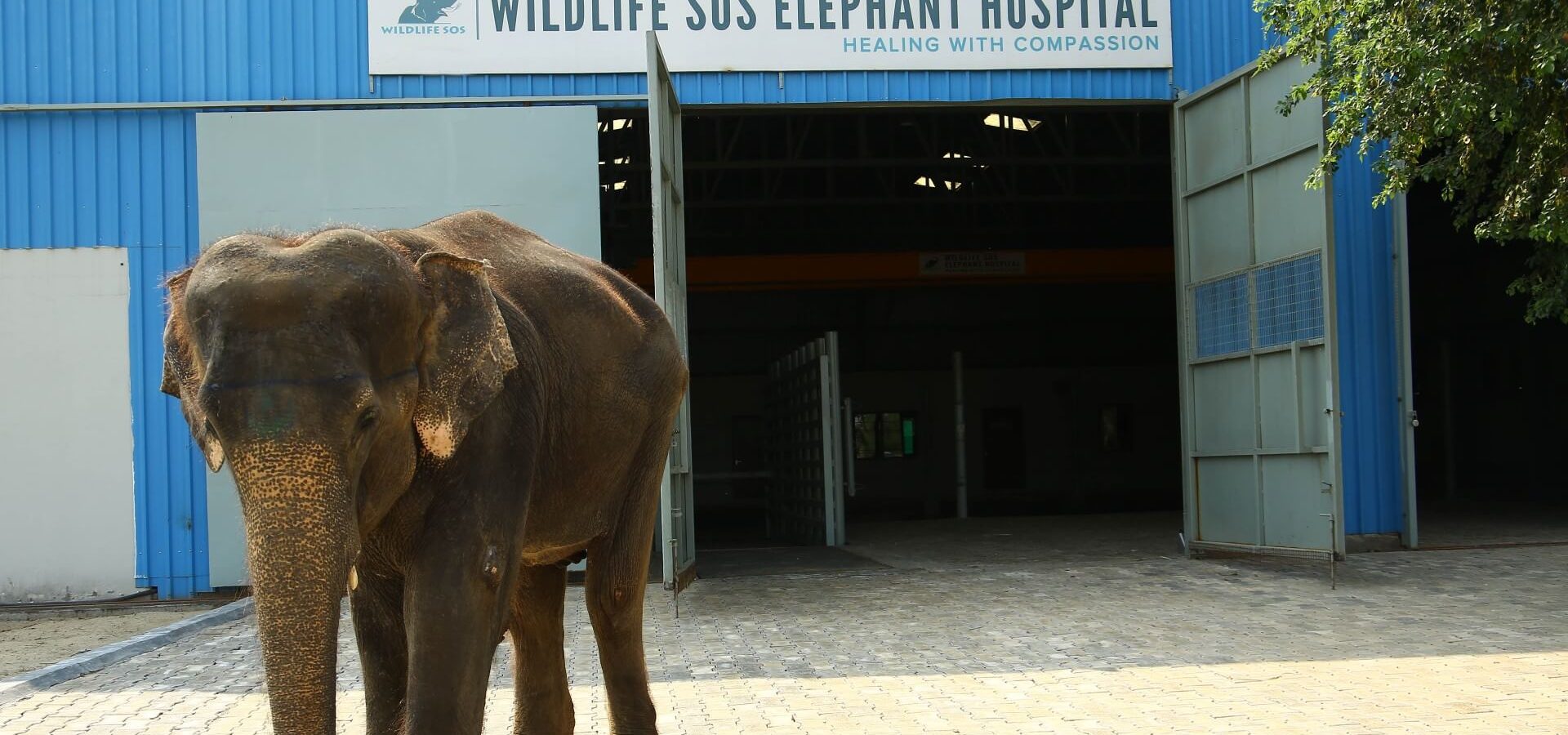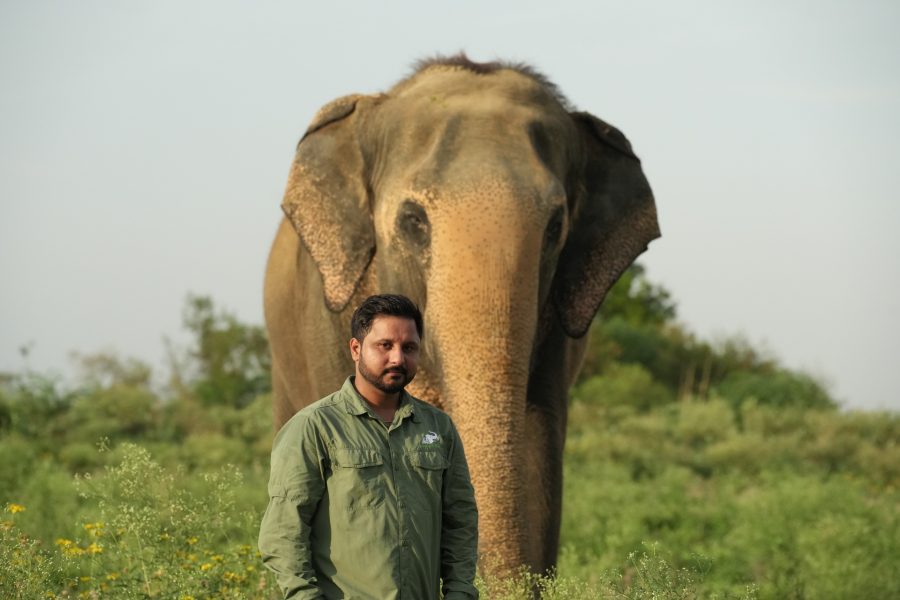The heartbreaking sight of a wounded elephant walking in pain along busy highways and narrow streets is the most prominent sign of abuse and ignorance that can be represented. Many people firmly believe that the elephant, whose body hosts chronic, infected wounds and abscesses, is actually well taken care of but the reality is far from what is visible.
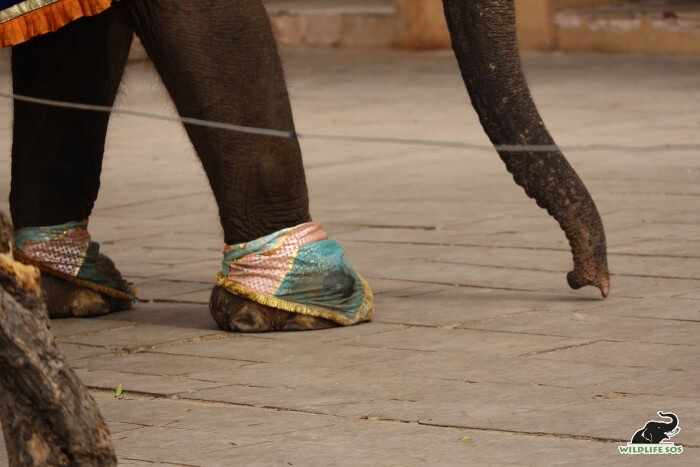
It is important to note that many of the handlers of the elephants in India do not receive proper training to render adequate care to the elephant. This results in resorting to traditional methods of training which includes beating of the elephants, starvation, chaining, and even burning their feet!
Wildlife SOS has rescued elephants from abhorrent conditions of neglect, with their towering structures diminished under the crushing weight of an overbearing carrier and where their lives were commanded by a sharp piece of iron piercing through their flesh.
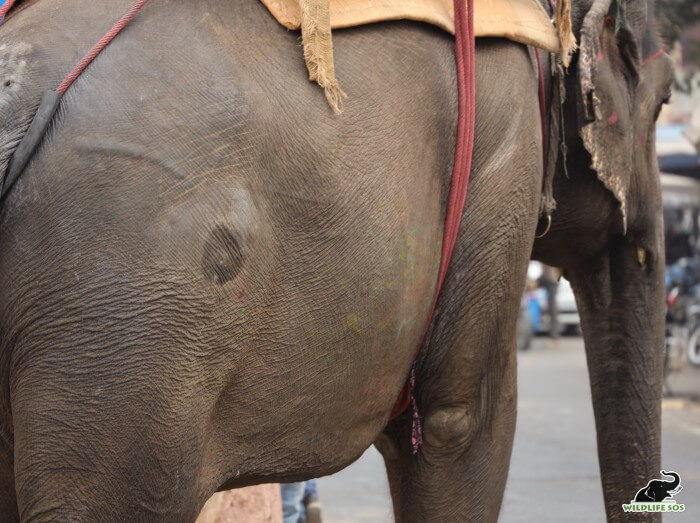
The injuries that are covered with paint, are often the cause of navigating through narrow streets or lying on concrete surfaces for long periods of time. These injuries are caused by scraping against the wall of the enclosures as they stay in confined spaces. However, at Wildlife SOS Elephant Rescue Centres, the walls of the enclosures are covered with smooth tiles to avoid such lacerations.
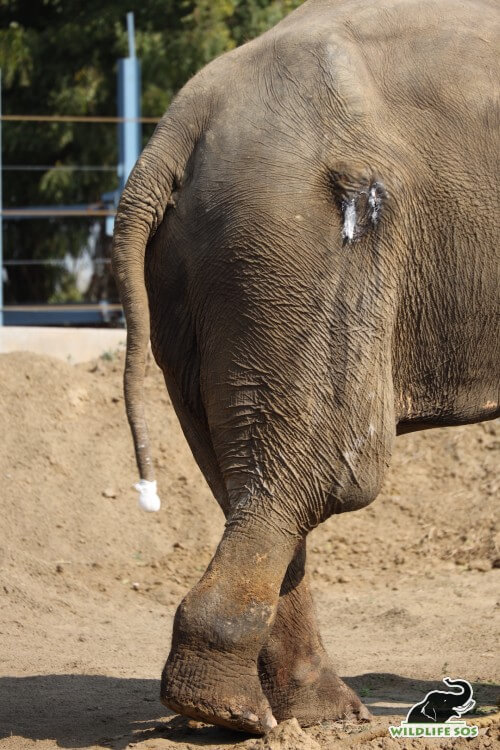
The elephant in the photograph above is Bhola, who was rescued nearly 11 years ago, after becoming a victim of a tragic collision with truck. Bhola’s owner would tie him from his tail, not allowing him to use his tail to swat flies away. Being tethered to smoldering, rusting iron poles gave Bhola chronic tail wounds, that remain under treatment even today.
While their mental well-being comes from decades of care and a steady process of trust-building, our elephant care staff and veterinary team work very hard to treat the wounds they suffer from. Every elephant trained for the purpose of entertainment, tourism, weddings, processions and parades will suffer from serious foot conditions that often digress to foot rot.
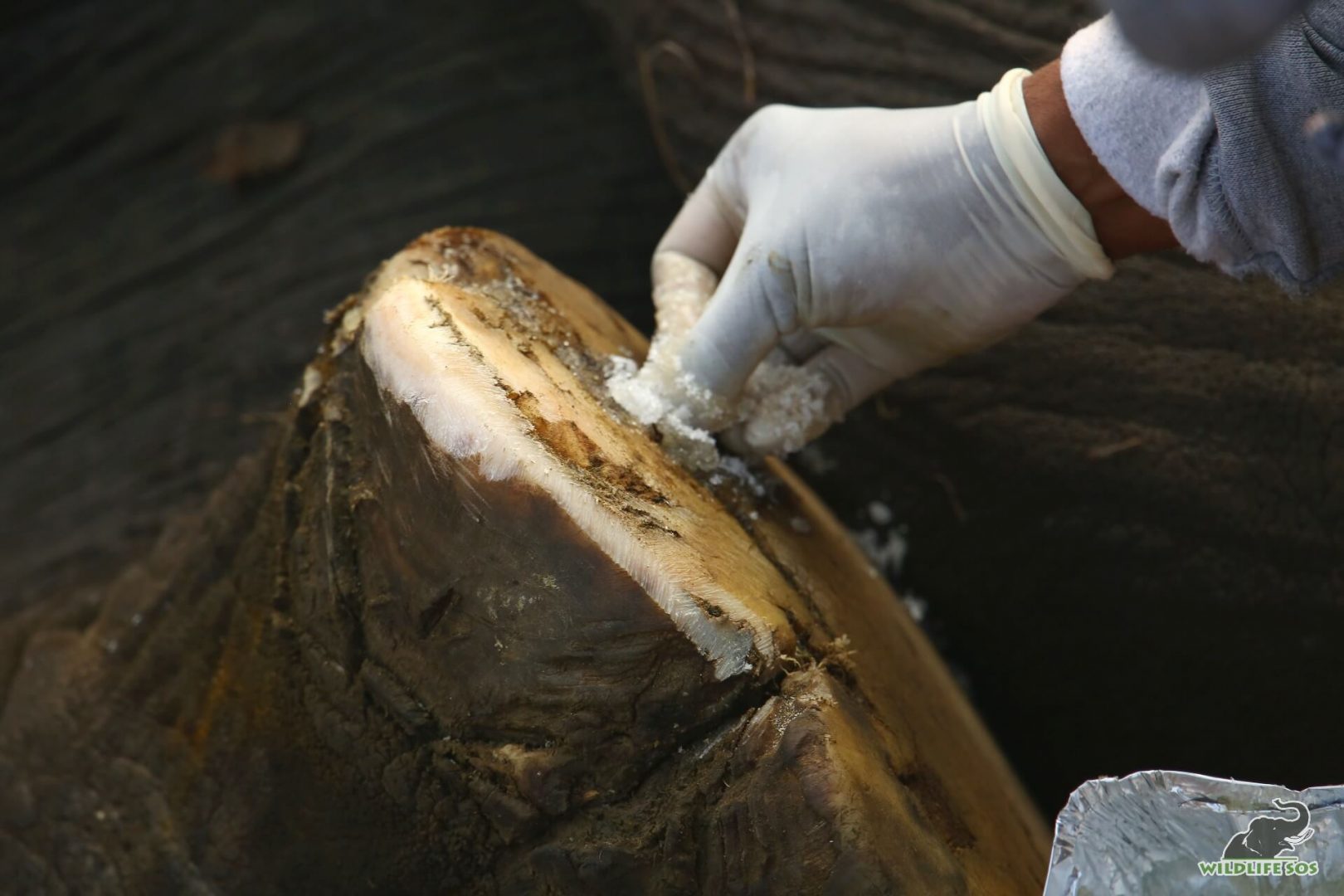
When Holly took her first steps to freedom at the Wildlife SOS Elephant Hospital, her body was covered with chronic abscesses and infected wounds. The iron carrier that rested atop her meek structure caused lacerations all along her spine. Adding to her misery, Holly was completely blind and was constantly guided by the piercing blow of a bull-hook. Our veterinary team’s priority was to disinfect and dress the wounds to prevent the infection from reaching her bloodstream. Due to Holly’s age, one had to be even more careful about her susceptibility to infections.
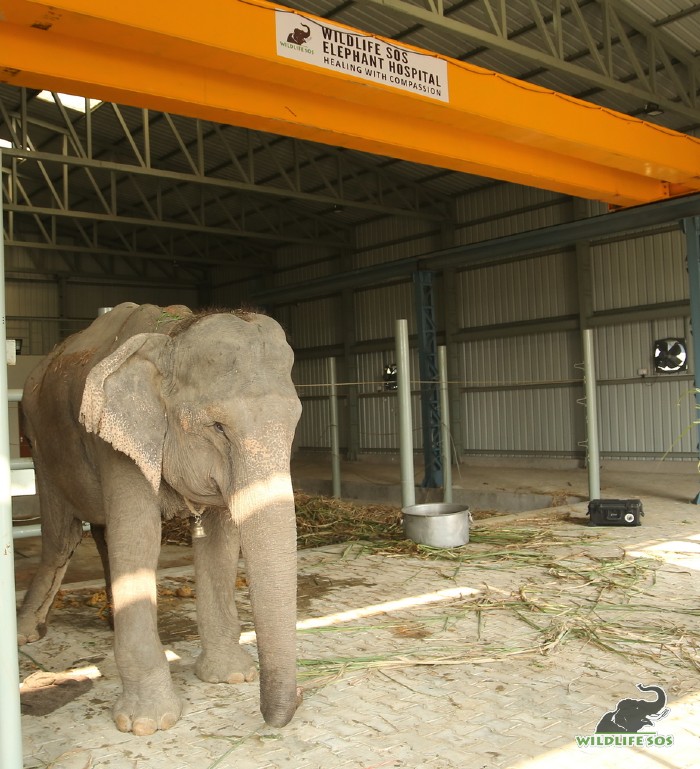
Along with medical ointments, our veterinary team and elephant care staff also prioritise using natural ingredients in wound care. The medicated foot baths include turmeric along with Epsom salt as turmeric is an antiseptic, thus expediting the recovery of wounded toenails, footpads, and injured cuticles. Turmeric is also mixed with a paste of antiseptic ointments and applied after cleaning the wounds.
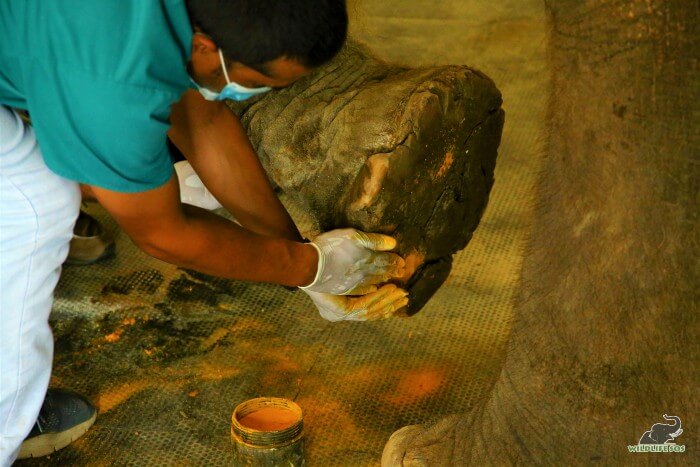
A common sight we come across is maggot-infested wounds, as was in the case of Jai. The spiked chains had caused infected wounds that hosted parasites and maggots, making the condition of his feet worse. As Jai continues to receive high-quality medical care, to keep maggot infestation at bay, our veterinarians use anti-fungal and anti-bacterial sprays. When directly applied to the wounds, these sprays cause immense pain which is why they are diluted with coconut oil which acts as an instant soother to these painful open wounds.
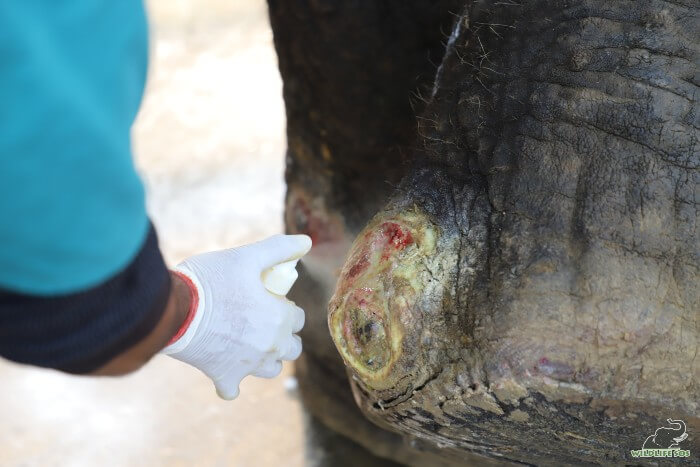
Coconut oil, sesame oil and neem oil are excellent oils that are used while treating toenails and footpad abscesses. A paste of coconut oil, neem oil, neem leaves and aloe vera gel is applied to the feet of our elephants who suffer from chronic foot pad abscesses, like Mia. This paste aids in the recovery of foot pads and also speeds up the superficial generation of tissues.
Another common ailment that our elephants suffer from is hip abscesses which is particularly a challenge to treat as the elephants rest on one particular side, which slows down healing. Bull elephants like Raju, Bhola and Jai suffer from chronic hip abscesses that are regularly cleaned and dressed with a paste of antiseptic ointment that also contains keratinising agents which aid the generation of new skin. These abscesses are treated twice a day to clean the mud that may cause further infections or slow down the process of healing.
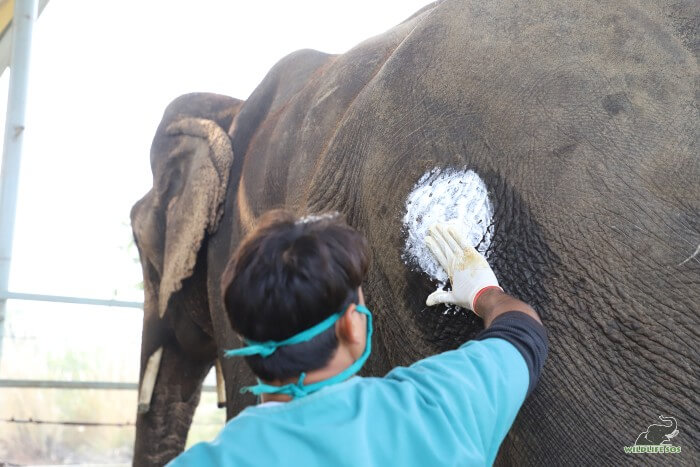
Treatment for our male elephants continues during the period of musth with the help of a Protected Contact wall in their enclosure. The wall is designed in such a way that it ensures safe interaction between the elephant and his caregiver. There are ports or openings that let the veterinary doctors conduct blood draw, apply medication and examine wounds without agitating the elephants further.
As serious wounds need a longer duration for treatment, the elephant care staff comforts the elephants with a steady supply of treats. Our elephants, who are strangers to the care provided to them at the Wildlife SOS Elephant Rescue Centres, also show immense strength in being patient during these intense therapy sessions. We make sincere efforts to provide high quality care for our elephants – many of whom have entered the geriatric phase in their life and need specialised care for this important phase.
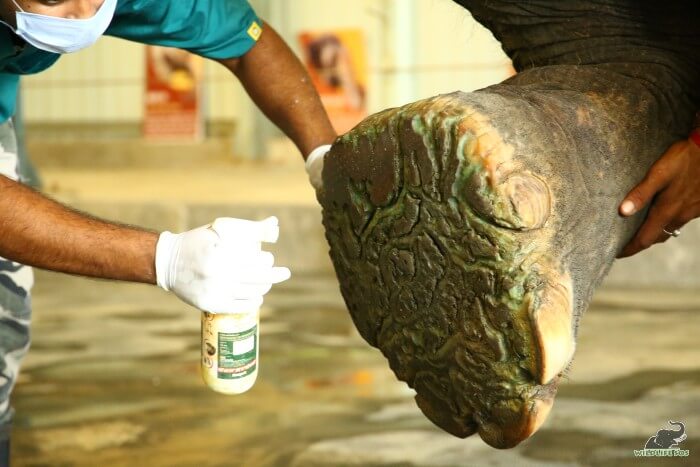
Kindly consider becoming a sponsor for one of our rescued elephants and playing an intrinsic role in their healing journey with Wildlife SOS. You can know all about our elephants here and for more information, interesting anecdotes about the elephants, please consider signing up for our newsletter.

